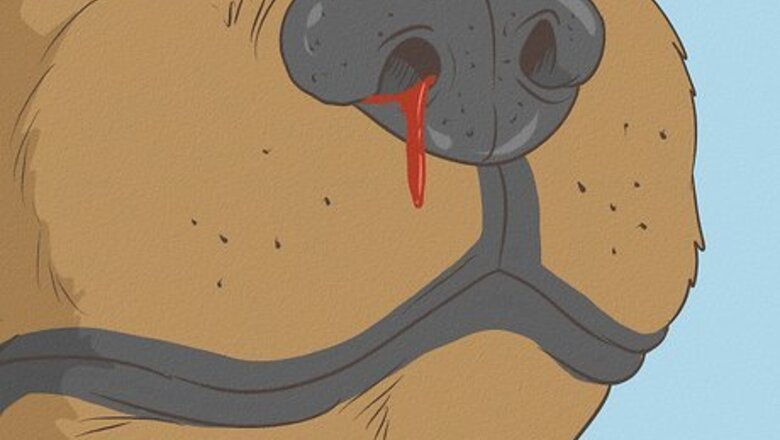
views
Recognizing Symptoms and Getting Diagnosed
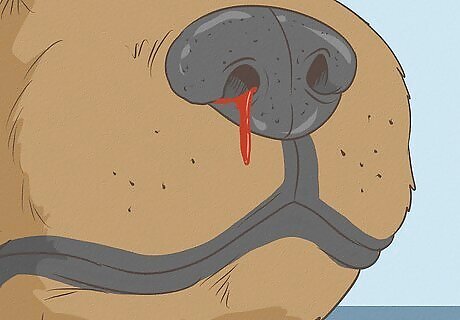
Look for common nasal aspergillosis symptoms. Nasal aspergillosis may present with symptoms like sneezing, nasal pain, blood coming from the nose, a diminished appetite, a swollen nose, and mucus, blood, or pus-ridden discharge from the dog's nose. There may also be discoloration of the skin on the nose.
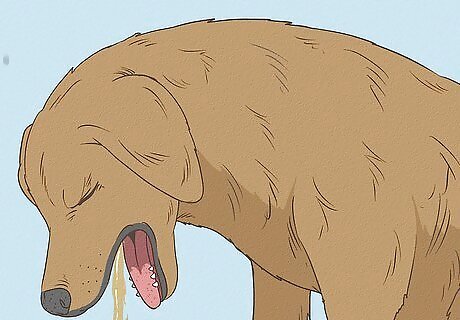
Look for common signs of disseminated aspergillosis symptoms. Disseminated aspergillosis is a form of the infection that is not limited to the nasal area. A dog with a disseminated form of the infection may have spinal pain or tenderness of the feet, a fever, loss of body weight, vomiting, or even anorexia.
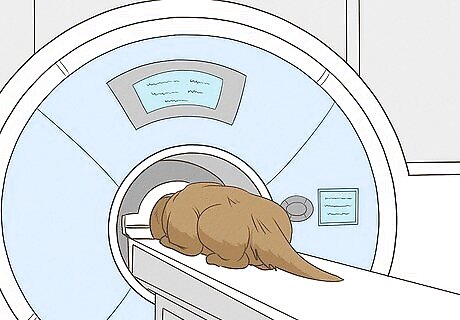
Get the dog diagnosed as soon as possible. If you recognize any of the above symptoms and suspect your dog may have an aspergillosis infection, it is important that you get him or her diagnosed as soon as possible. A veterinarian can perform a radiograph or computed tomography (CT) scan to diagnose a nasal infection. They may also try rhinoscopy, which uses a camera to look inside the nasal cavity. Alternatively, the vet may perform a biopsy of tissue or look at discharge to try and see aspergillus organisms or perform a blood test to look for aspergillus antibodies.
Using Oral and Other Medications
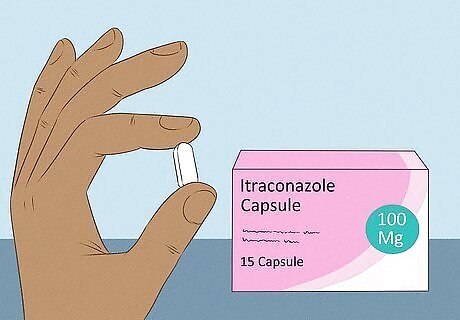
Try oral medications as a first measure to treat aspergillosis. Oral anti-fungal medications to treat aspergillosis are available, and have some degree of success against aspergillosis. These medications absorb through the stomach and spread throughout the body via the bloodstream to treat the infection. One such medication is itraconazole. Anti-fungals are not highly effective against aspergillosis, because they fail to get enough active drug into the fungal plaques to kill them. This is because the fungus grows in the skull chambers and the only way for the drug to contact the fungus is via the blood supply to the nose. In some dogs, itraconazole causes vomiting, nausea, and abdominal pain. In rare cases, it can cause reactions including severe skin ulceration and liver failure. Itraconazole should not be given to pregnant dogs because it can cause fetal abnormalities and unintended abortion. The dose of itraconazole is 10mg/kg by mouth for several months, or indefinitely. It is available as an oral suspension or as 100mg capsules. A typical 30kg Labrador requires three 100mg capsules once a day with food. Some dogs need treatment for 3 years before therapy is finished. Make sure you have a clear idea of the potential costs before starting treatment. Itraconazole is an expensive medication. Your vet can give you an estimate o. The capsules are best given with food since this increases the drug's absorption into the blood stream; however, the oral suspension should be given on an empty stomach.
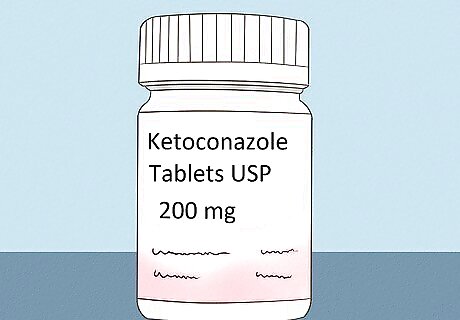
Try using ketoconazole to cause the breakdown of fungal cells. Ketoconazole is an anti-fungal that works by disrupting the fungal cell membranes so they leak and the cell contents seep out. However, the results of ketoconazole used alone as a treatment for aspergillosis has been disappointing. Ketoconazole is broken down by the liver and can cause liver damage in some cases. Luckily, this damage is reversible if treatment is stopped, so it is important to monitor your dog's liver function regularly. Side effects can include nausea, vomiting, and coat color change. Ketoconazole should not be given to pregnant dogs because it can cause fetal abnormalities. Ketoconazole is best given with food because this increases absorption and decreases side effects. It is available as 200mg tablets and a 100mg/5 milliliters (0.17 fl oz) oral suspension. The dose against aspergillosis is up to 40mg/kg/day, and should be used in conjunction with amphotericin B. A 30 kg Labrador requires a dose of 2 by 200mg tablets, 3 times a day.

Try using amphotericin B to fight the infection. Amphotericin B is an antifungal medication. This medication is very effective in treating fungal infections of all kinds, even those that have become systemic in nature. However, Amphotericin B can cause kidney damage and, as a result, it has been largely replaced by newer anti-fungal drugs. Nevertheless, it may prove effective in treating your dog's aspergillosis, particularly by using its newer formulations. The powder is reconstituted and dissolved in 5 – 20 milliliters (0.68 fl oz) of 5% dextrose solution and given intravenously 3 times a week. The dose of amphotericin B is 0.25-1mg/kg. The reconstituted powder contains 5mg/ml of amphotericin B and so a 30 kg Labrador requires between 1.5 milliliters (0.05 fl oz) and 6 milliliters (0.20 fl oz) to be added to the 5% dextrose solution. It is recommended to start at this dose rate to see if your dog tolerates the drug. Because Amphotericin B can cause renal failure, renal function should be checked prior to each treatment. The dose should be gradually increased to a total dose per treatment of 4-8mg/kg. This may be required for several months, and in combination with another antifungal such as ketoconazole.
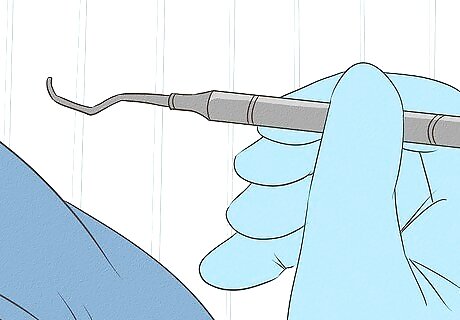
Investigate curettage of the nose. A veterinary surgeon can use a curette to scrape tissue from the nose to achieve a more promising outcome. At the same time, the doctor will likely use liquid and/or cream clotrimazole to fight the infection. Curettage requires a general anesthetic to place drains into the dog's skull. The infected skull chamber is then flooded with antifungal, ensuring direct contact with the fungal plaques. The antifungal is allowed to soak in for at least an hour, before being drained. During this time, the dog is kept anesthetized, so there is an additional cost associated with a prolonged anesthetic.
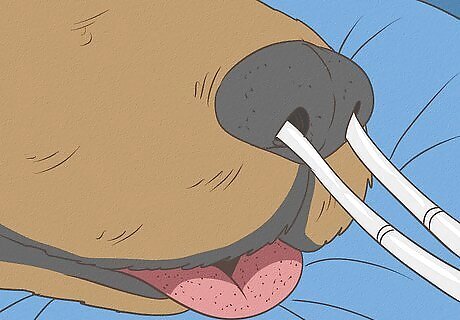
Look into 1% clotrimazole to use in conjunction with curettage. The drug of choice to use during the curettage process is 1% clotrimazole. Your dog will be put under anesthetic, and his nose will be plugged with Foley catheters (soft rubber tubes with an inflatable balloon at the tip). This makes sure that the clotrimazole does not dribble out through the nostrils during the procedure. Then, small catheters are surgically placed into the nasal cavity by drilling small holes in the bone of the nose. 50-60ml of clotrimazole is infused into the nose. Your dog's position is changed every 15 minutes so that each part of the nose comes into contact with the treatment. After an hour, the Foley catheters are deflated, removed, and the clotrimazole is drained from the nose. This therapy has an 85-95% success rate with a single treatment. The nasal discharge usually resolves within 7 – 14 days and rhinoscopy (inserting a camera up the nose) can confirm the absence of fungal plaques. If plaques are still present then a second treatment 1 month after the first usually ensures success.

















Comments
0 comment